How to Photograph Bike Races and Other Sporting Events
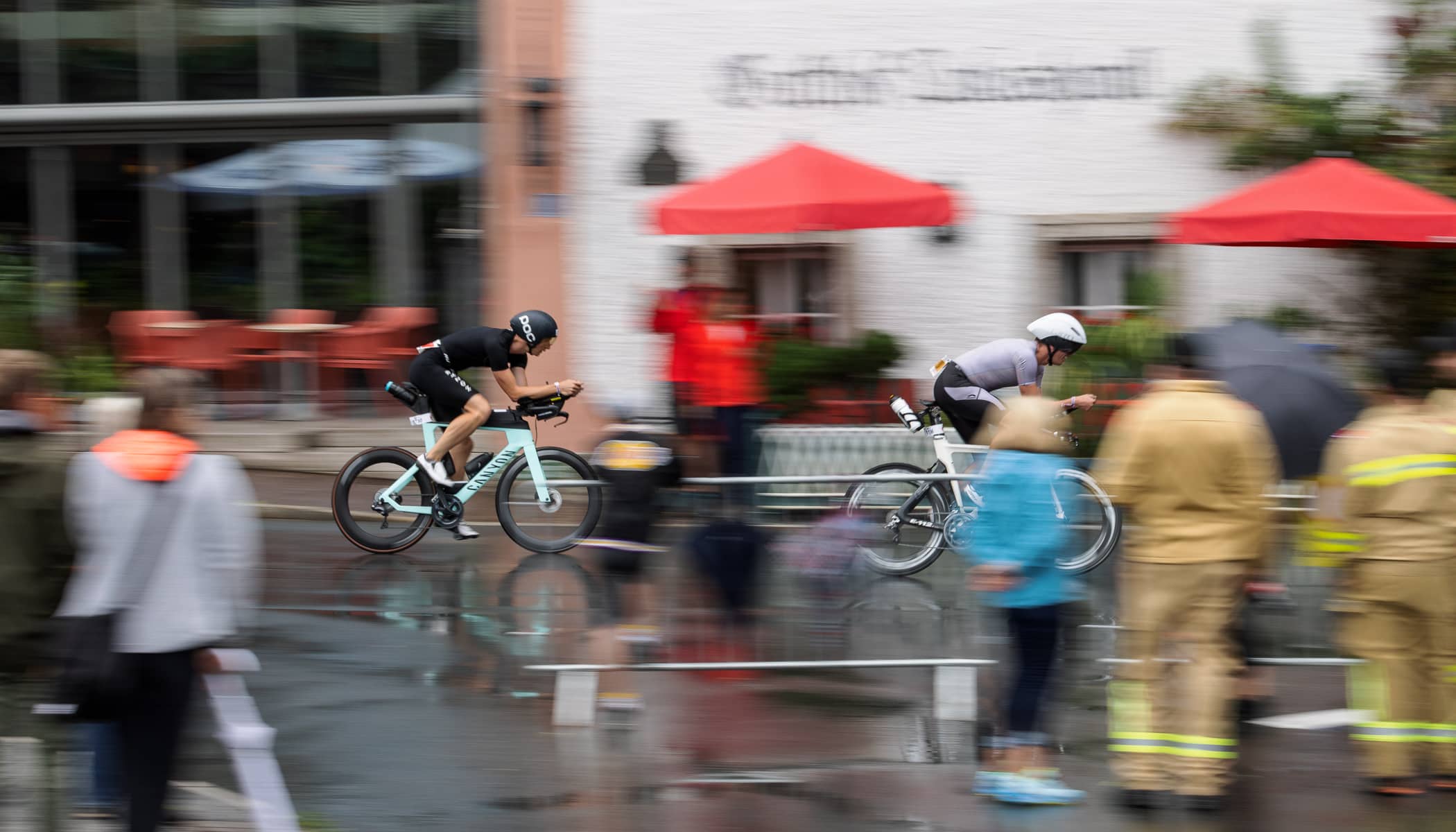
You can photograph racing events professionally or just for fun. Photographing sporting events recreationally allows you to experiment with little to no pressure. The tips and inspiration in this article can help you get the most out of any sporting event.
The sample photos in this article were taken near the Austrian town of Zell am See, where I was on vacation and coincidentally, was hosting an Ironman race on the same day. This meant the roads in the area were closed, so I had more time to experiment with various compositions with the participants.
Photography equipment
You can shoot sporting events with any focal length. A telephoto lens is not essential. On the other hand, there are shots that you can’t get without a telephoto lens. If you’re after photos of riders or want to capture their facial expressions, you need a longer focal length.
Similarly, an amazingly fast lens is not necessary either. You can get by with a lower range lens. Since I hadn’t planned for the race, I only had two travel lenses with me: an ultra-wide 16-35/2.8 and a 70-300/4-5.6 telephoto lens. I used both on a Canon R5 full-frame camera, but as you will soon learn, even fast focusing is optional for many shots.
A nice extra for sports photography is continuous shooting mode. Continuous shooting mode is when you hold down the shutter button and shoot 5 to 20 frames per second. Again, you can get by without it.
Focusing on the cyclists
I’ll start with the most obvious—cyclist shots. If we’re talking close-ups, then focusing speed makes a difference. Modern mirrorless cameras can track the riders no matter where they go, making them easier to work with.
But don’t worry if you have older equipment. Even an entry-level DSLR can be precise using the center focus point. The composition isn’t ideal, but that’s why you take a slightly wider shot, which you can then crop to get the rider off-center.

Depending on the speed of movement, you need a very short shutter speed, around 1/2000s.
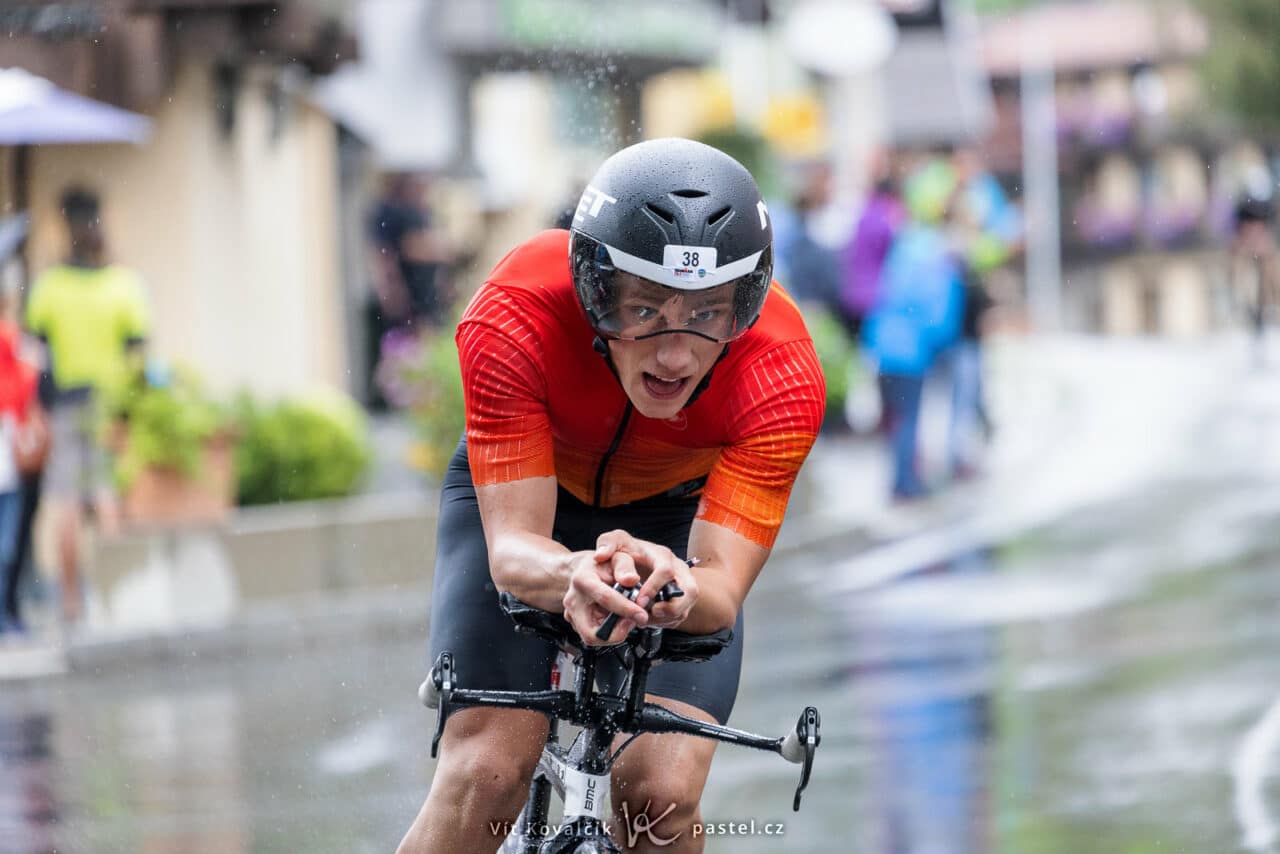
Canon R5 Canon 70-300/4-5.6L IS, 1/2500s, f/5.6, ISO 2500, focal length 236mm
Wider shots
With a wider shot, the demands for focusing are lower. Worst-case scenario, you can prepare by focusing on a specific point and wait until the cyclist reaches it.
If you don’t only want photos from the side, use curves in the racecourse. The riders will come directly towards you and then turn away from you. Both direct shots and more dynamic tilts in the curves are interesting. Blurred racers behind also make for a great background.

Canon R5 Canon 70-300/4-5.6L IS, 1/1600s, f/5, ISO 250, focal length 170mm
If possible, also watch the background of the shot so there are no noticeable advertisements or trash bins that can distract from your photo. I had to reconsider my position a few times because, even though the curve was perfect, there was a plastic trash bin in the frame.
Include the foreground
For greater depth, try placing another object in the foreground. This can even be another cyclist.
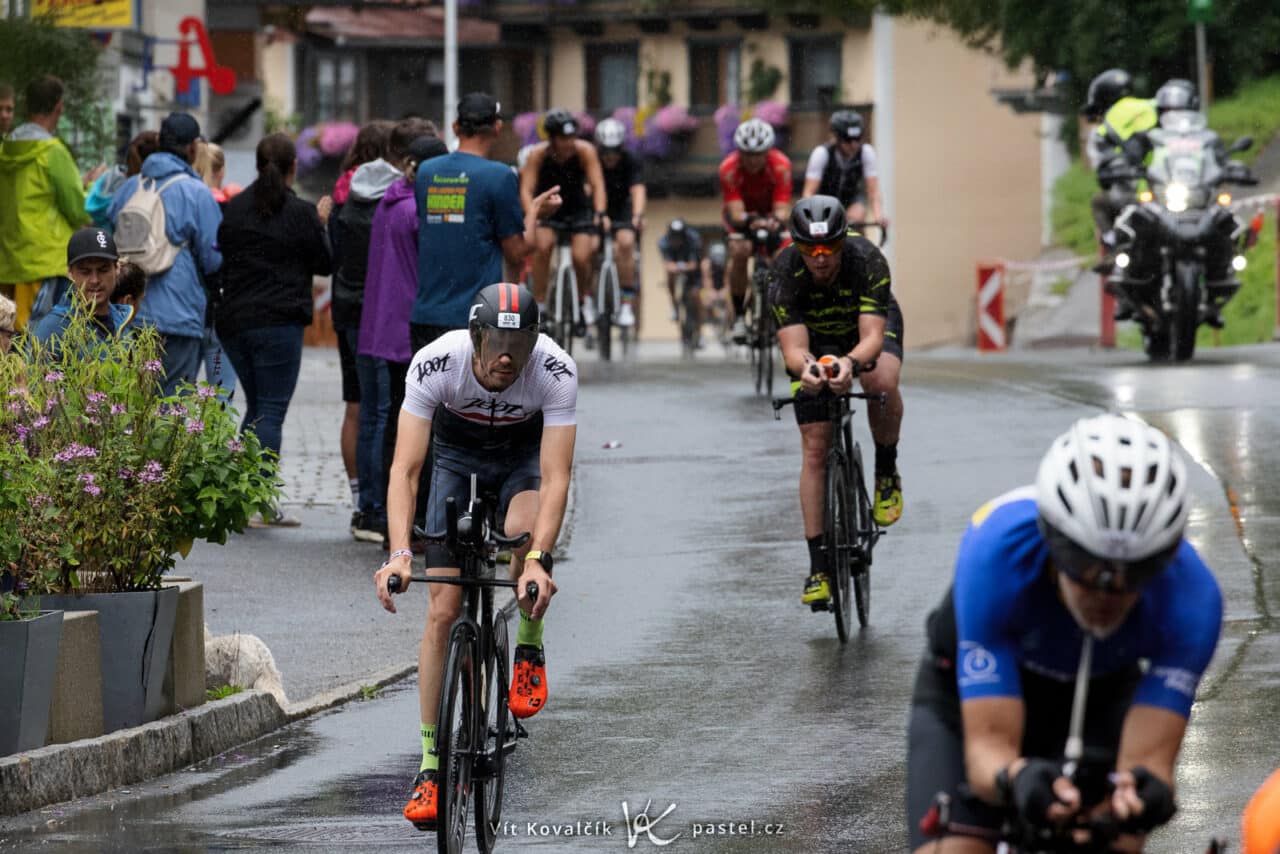
Canon R5 Canon 70-300/4-5.6L IS, 1/1600s, f/9, ISO 2000, focal length 300mm
A somewhat more common foreground is made up of spectators, where you can easily find gaps to see the cyclists.
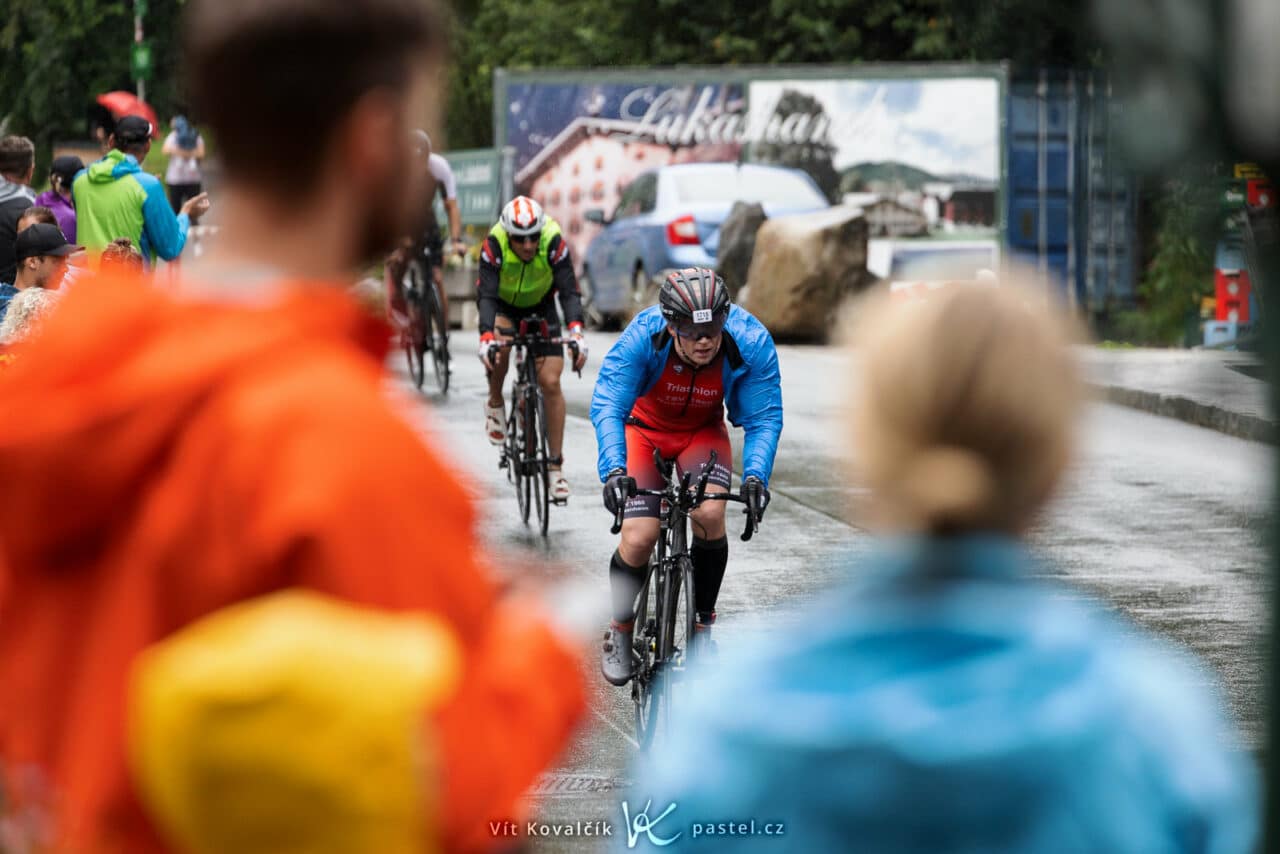
Canon R5 Canon 70-300/4-5.6L IS, 1/1600s, f/5.6, ISO 500, focal length 252mm
It’s also a good idea to for other views through various openings. In this case, there was a hole in the foliage. Getting a very fast cyclist into it took several tries. Fortunately, the race had many participants.
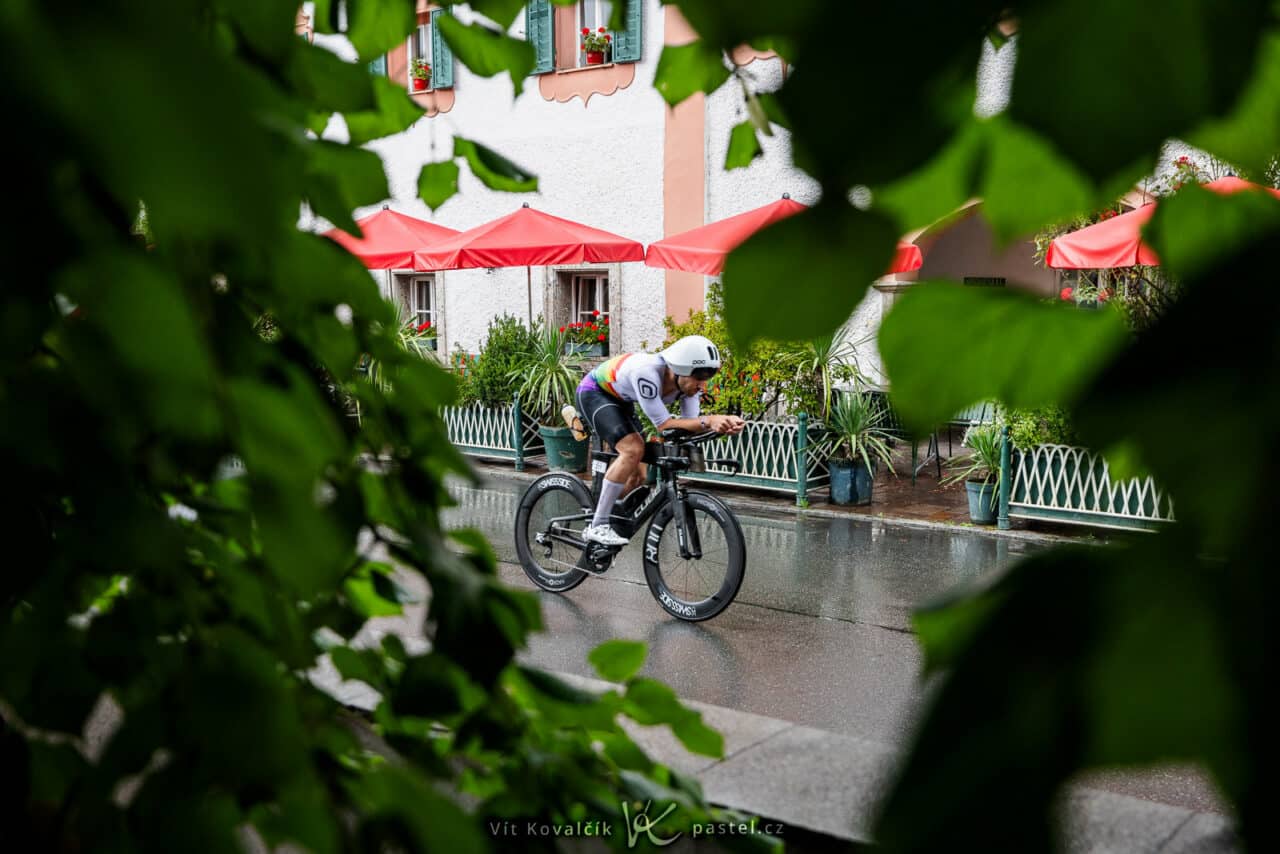
Canon R5 Canon 16-35/2.8 III, 1/2000s, f/3.2, ISO 640, focal length 35mm
Group shots
Of course, you don’t have to only photograph individual cyclists. Photograph groups of cyclists together. For this, I also increased the aperture to f/9, which gave me an ISO of 2000 on a gloomy day.

In the shot below, there’s a support motorcycle with the event’s official photographer. This photographer has different opportunities than the photographers in the audience.
Motion-blurred background and panning
A common technique is to follow the cyclist with the camera, also known as panning. Panning blurs the background with movement. A higher aperture and low ISO sensitivity help prolong the shutter speed. Again, it depends on the speed of the cyclists, your position, etc., but a good starting point is 1/100s. If it’s too bright, an ND filter can help.
Turn off image stabilization or set your camera to panning mode, if possible.
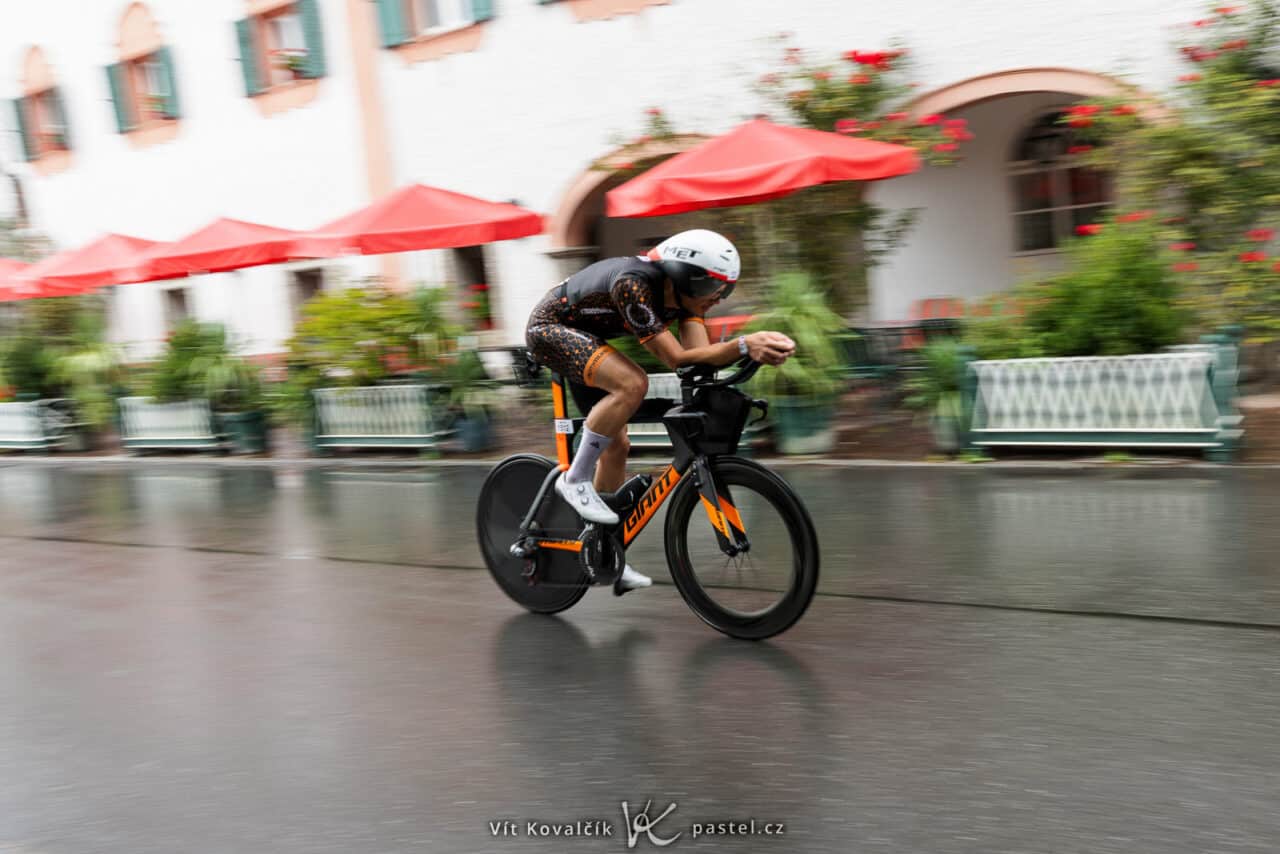
Canon R5 Canon 16-35/2.8 III, 1/125s, f/8, ISO 100, focal length 35mm
A more effective option includes bigger surroundings with spectators in the foreground.
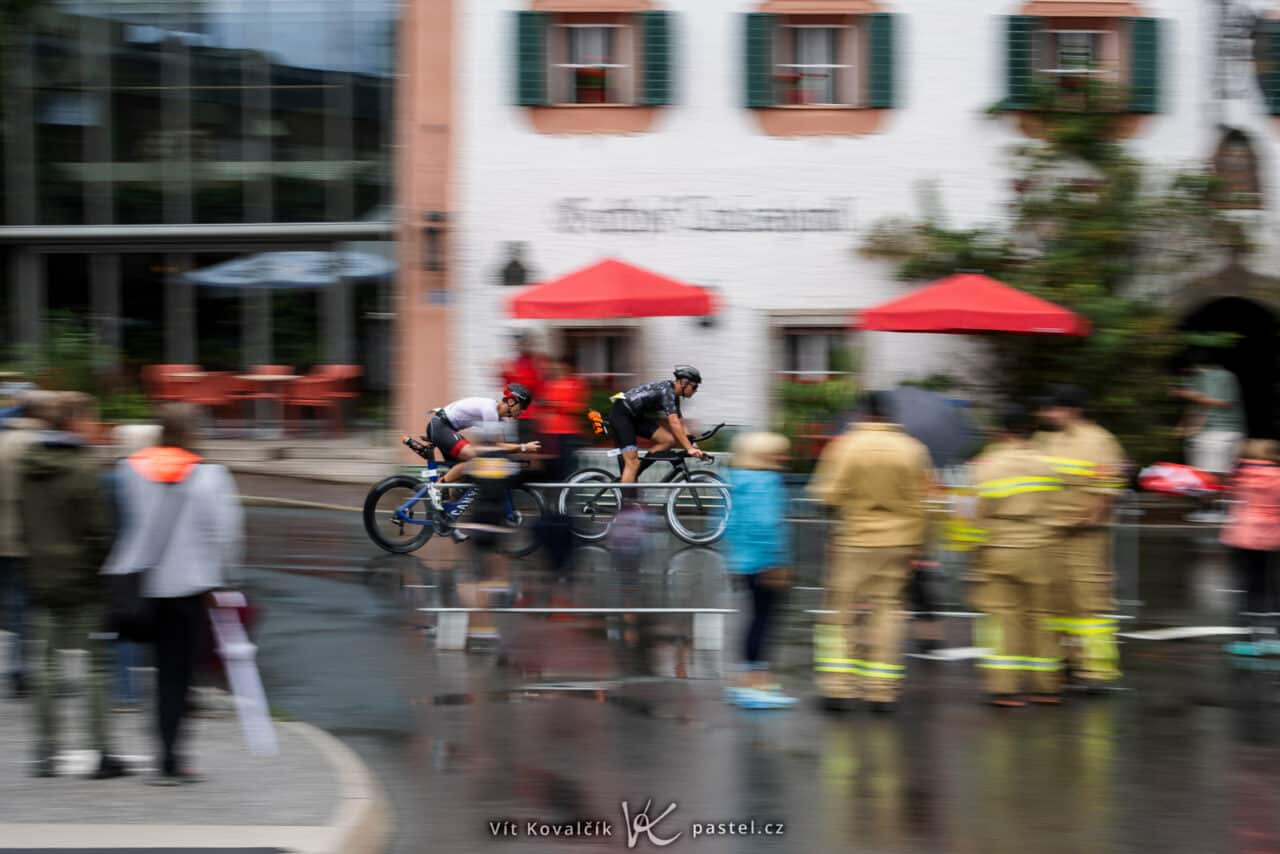
Canon R5 Canon 70-300/4-5.6L IS, 1/50s, f/11, ISO 100, focal length 70mm
For a similar type of composition, it’s much harder to find the right place to shoot from. This type of shot with a shorter telephoto lens forces you to stand far back from the course. If it’s on the street, you can try moving to an intersection with another street. Then you have to consider that there’s not much choice of what will be in the frame. In this case, I would gladly get rid of the three noticeable firefighters, but unfortunately, I couldn’t avoid them.
Motion-blurred riders
The trick can be easily reversed—the camera is static and everything is sharp except the riders. Their motion is blurred due to the longer exposure. As in the previous example, the ISO is low, while the shutter speed and f-number are high. Once again, image stabilization comes in handy.
Some shutter angle effect is apparent. Riders who are closer and ride with their side to you will blur significantly more than those who are far away and head straight towards you. This makes it possible to combine one blurred rider for effect and other riders in the distance who remain sharp.
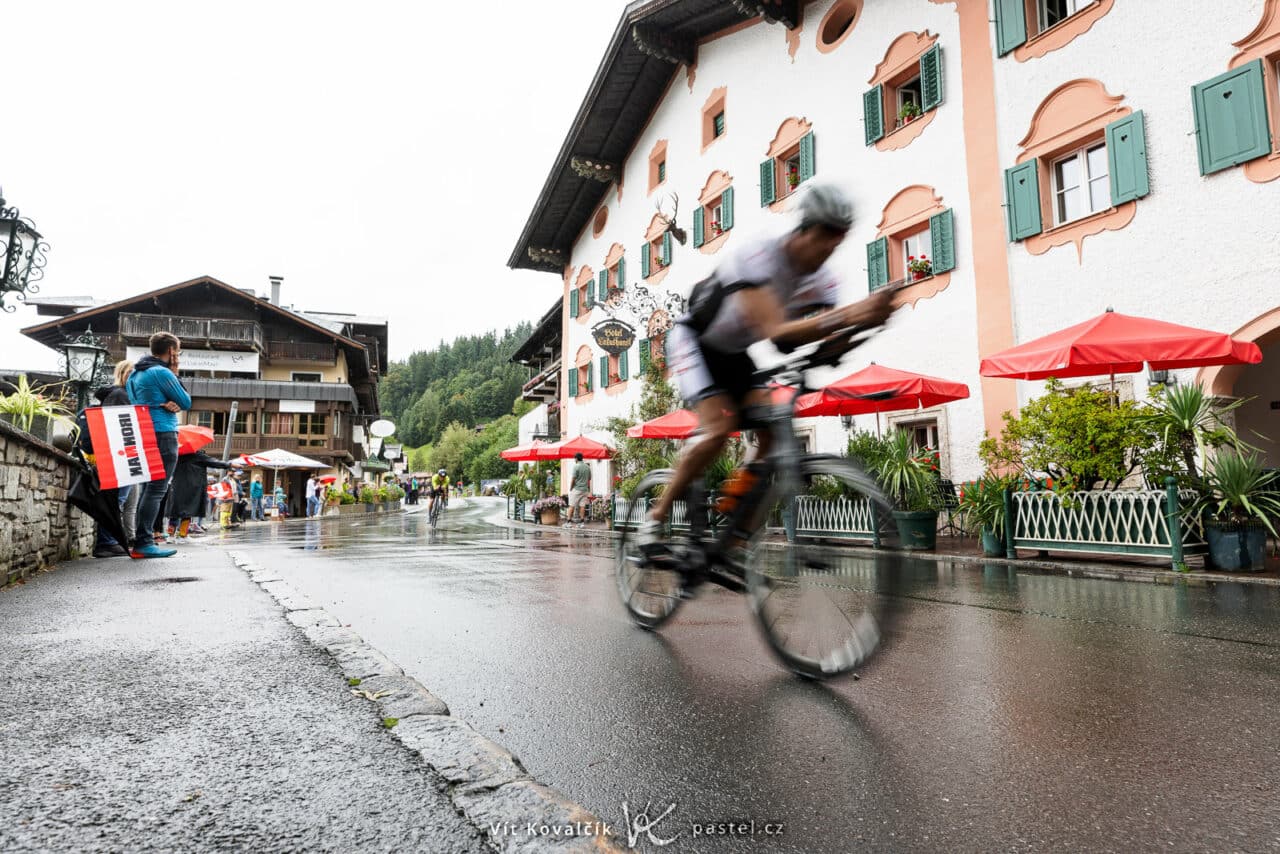
Canon R5 Canon 16-35/2.8 III, 1/100s, f/8, ISO 160, focal length 20mm
Close-ups and reflections
I tried capturing only the riders’ legs. I got interesting composition with the wet asphalt and its reflections.
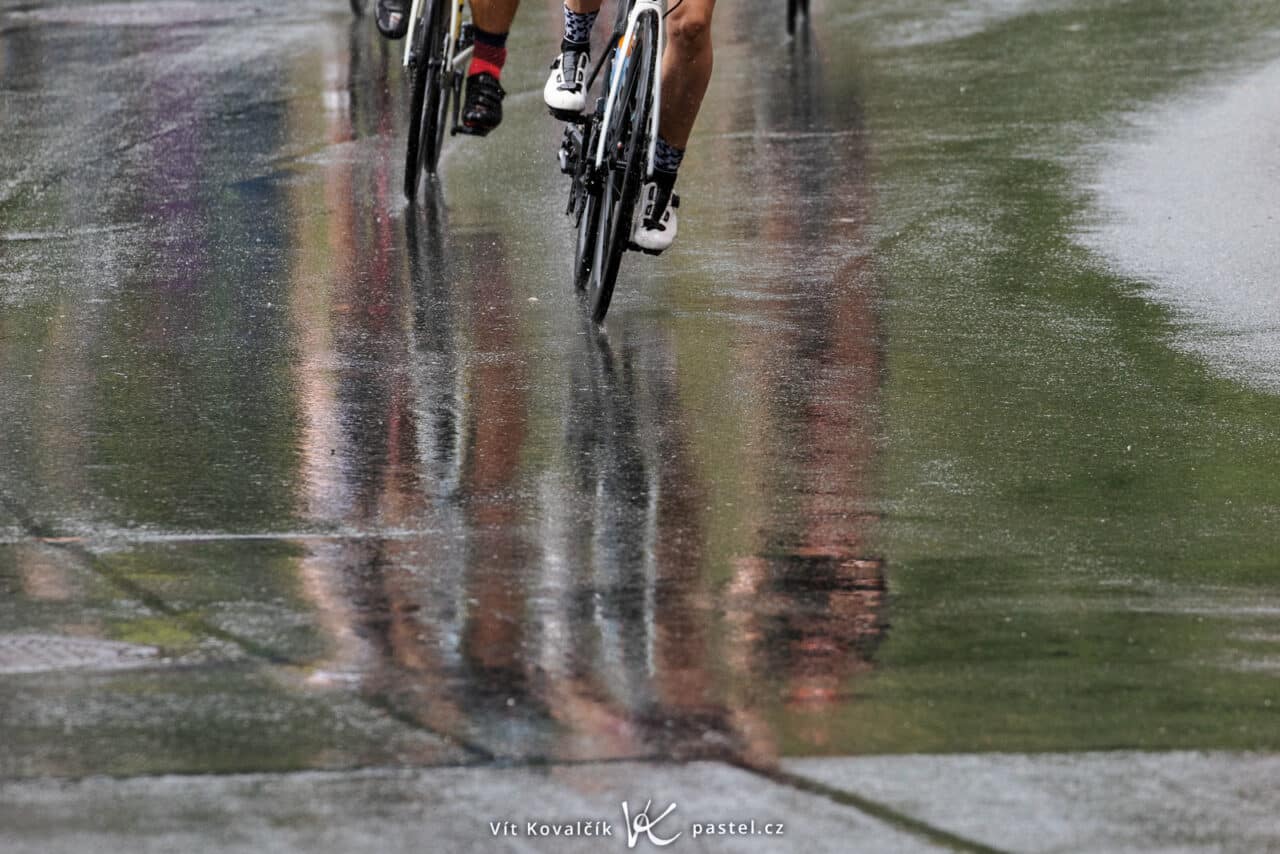
Canon R5 Canon 70-300/4-5.6L IS, 1/1600s, f/8, ISO 2500, focal length 300mm
I was also intrigued by the reflection of a head on the surface of a puddle. I had to manually focus, but even the f/13 aperture did not immediately give me sharp photos. I focused on individual riders until the photos started to turn out.
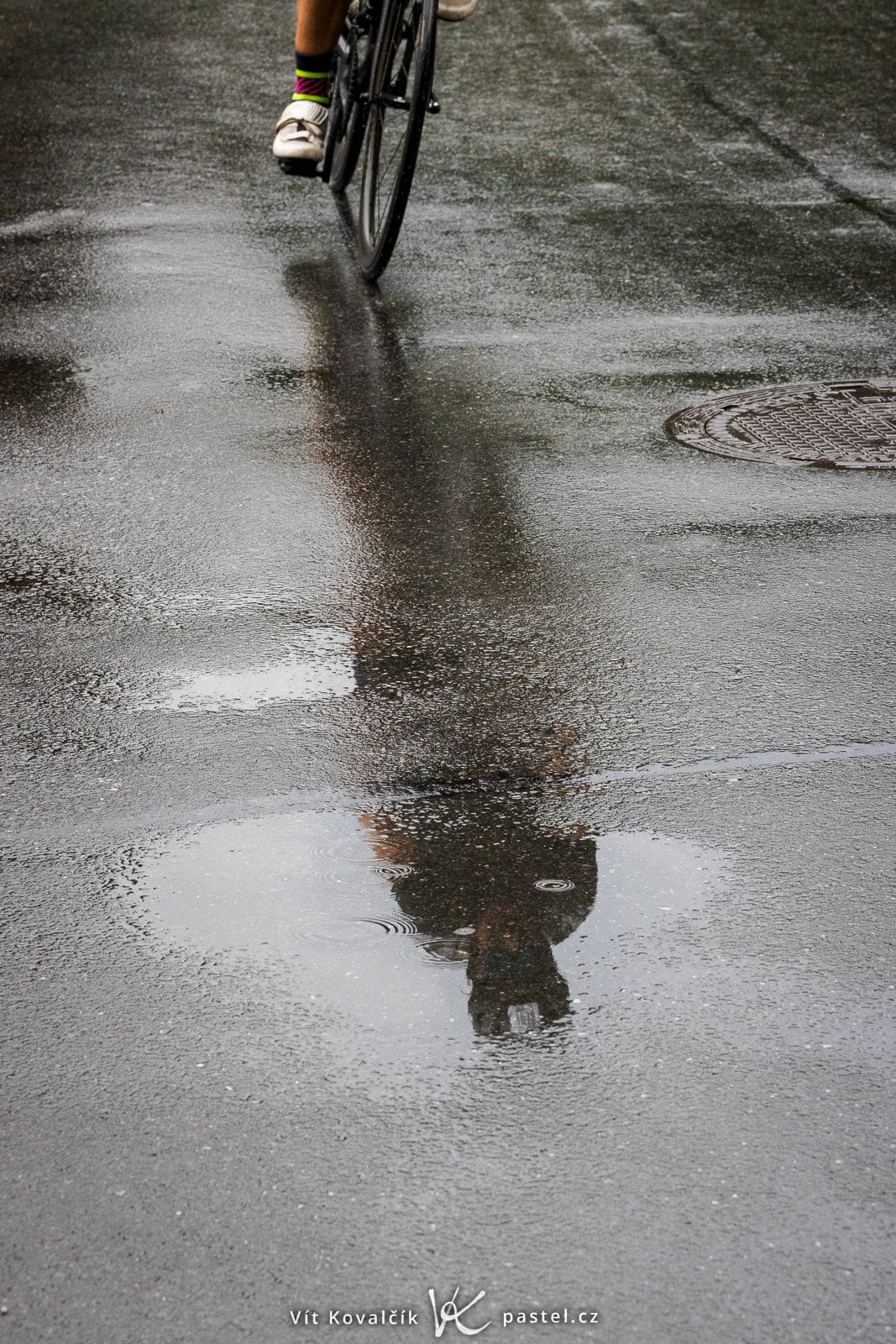
Canon R5 Canon 70-300/4-5.6L IS, 1/2000s, f/13, ISO 4000, focal length 146mm
Spectators
Spectators are also important. I didn’t want to bother them, so I just took a few shots from behind. My priority was the race flag, which gave me more options. The first option was to focus only on the flag.
The second option was to include the flag as an illustrative element and part of the race.
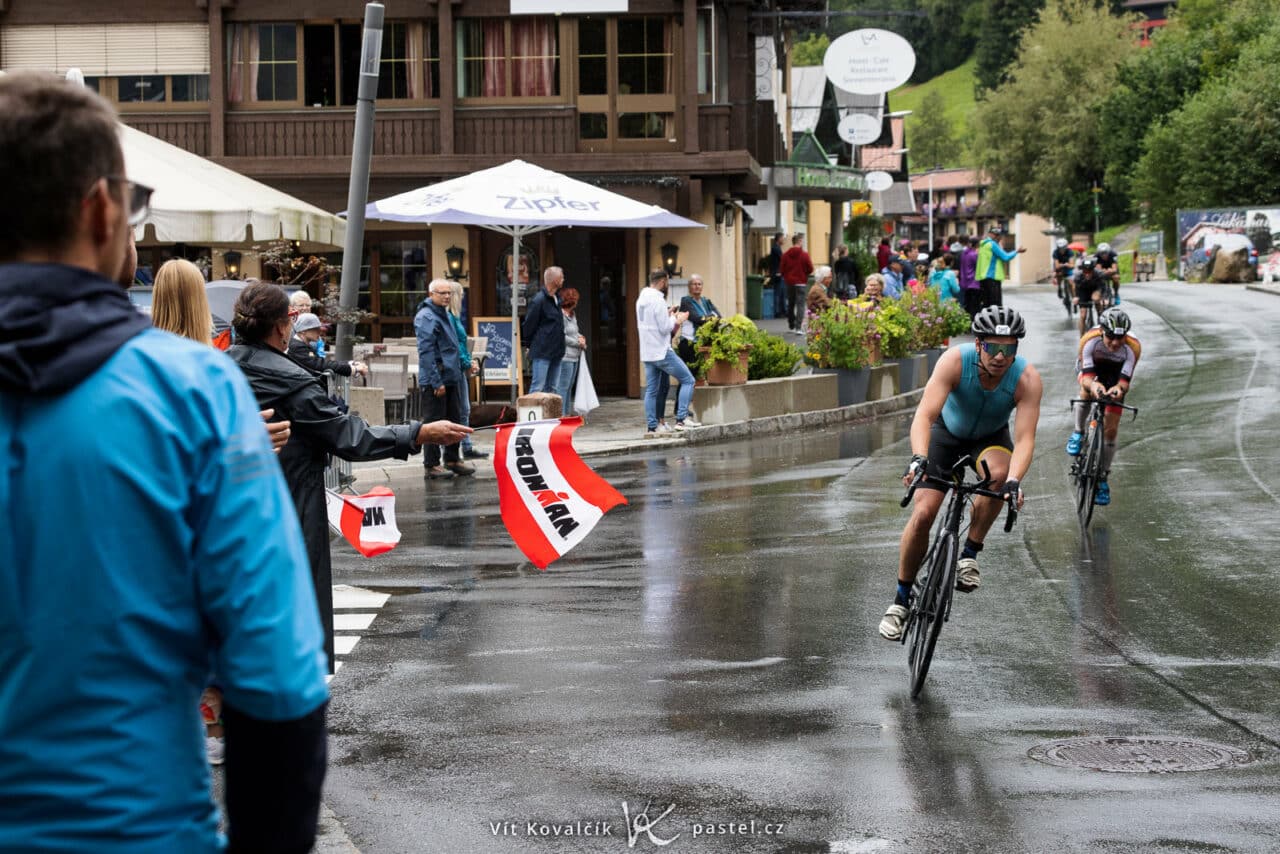
Canon R5 Canon 70-300/4-5.6L IS, 1/2000s, f/7.1, ISO 1250, focal length 150mm
Don’t be afraid to experiment
In hindsight, I think I could have tried more things or done some things differently. But overall, I am pleased with what turned out in this unplanned photoshoot. Hopefully, this series has served as inspiration that you can use at your next cycling photography event or other competitive sporting event.

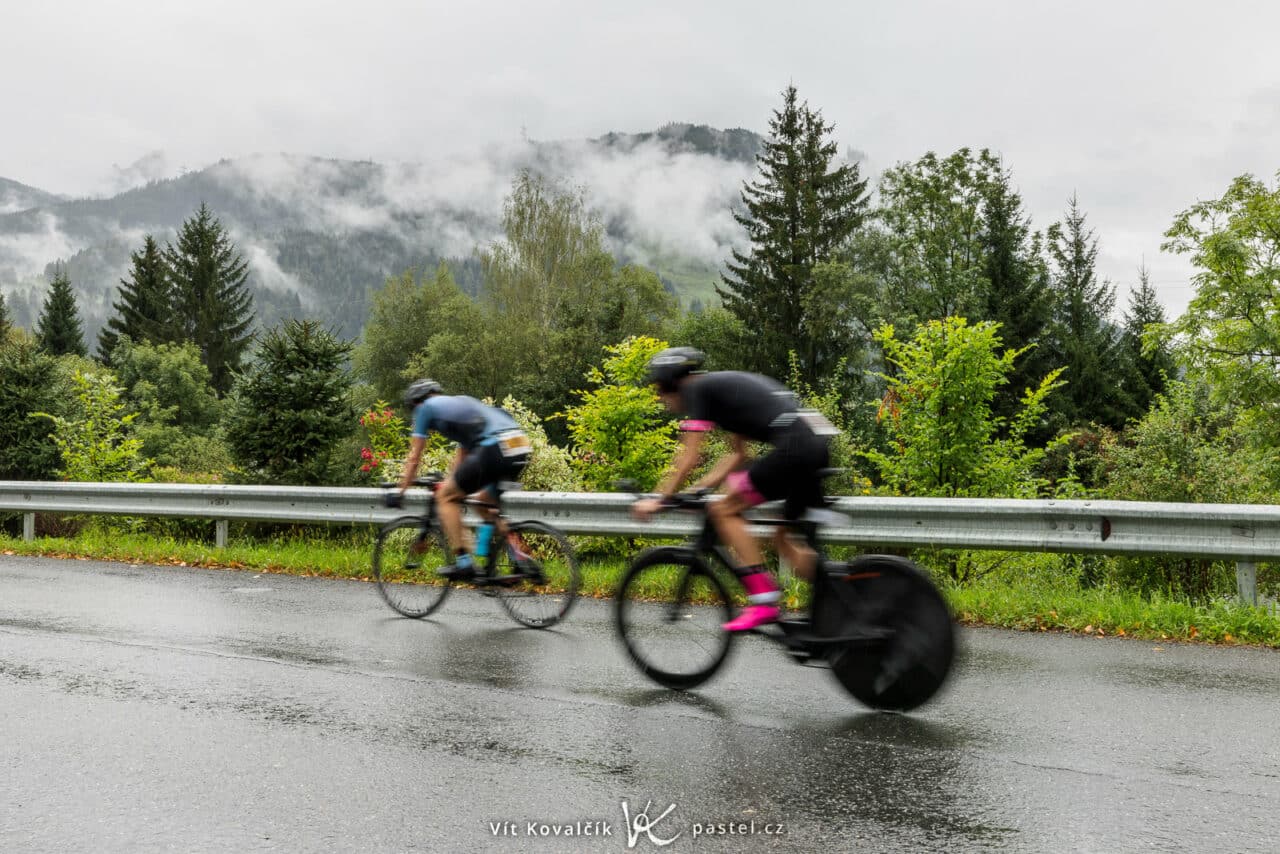


There are no comments yet.